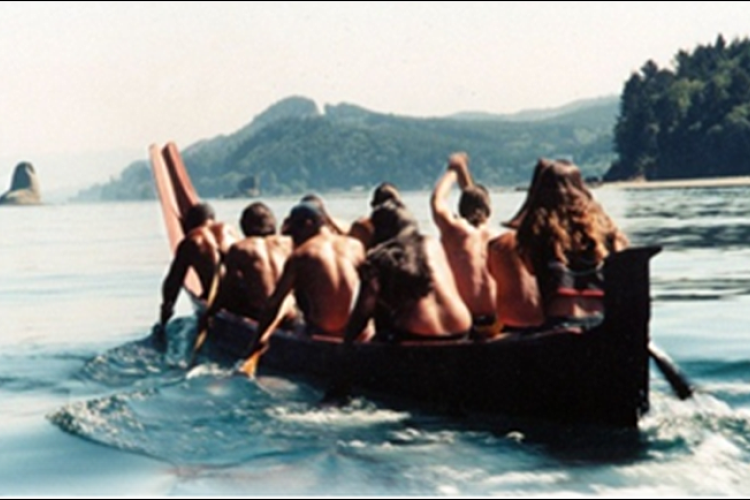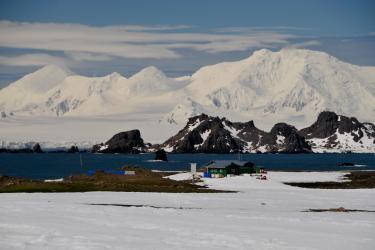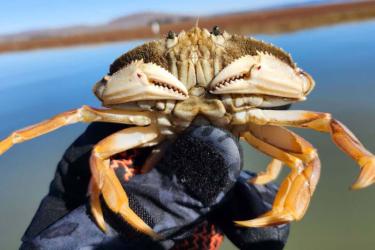Can you please provide some context on this issue?
On February 14, 2005, NOAA Fisheries received a request from the Makah Indian Tribe for a limited waiver of the Marine Mammal Protection Act moratorium on take of Eastern North Pacific gray whales (Eschrichtius robustus). The Tribe requested that NOAA Fisheries authorize a tribal hunt in the coastal portion of the Tribe’s usual and accustomed fishing area for ceremonial and subsistence purposes and authorize the making and sale of handicrafts created from the harvested whales. The Act imposes a general moratorium on the taking of marine mammals but authorizes the Secretary of Commerce to waive the moratorium and issue regulations governing the take of marine mammals if certain statutory criteria are met.
On April 5, 2019, we published a proposed rule to issue a waiver under the MMPA and proposed regulations governing the hunting of eastern North Pacific gray whales by the Makah Tribe for a 10-year period and a related notice of hearing before an administrative law judge to consider the waiver and proposed regulations. NOAA Fisheries’ decision on whether to waive the moratorium and issue regulations involves “formal rulemaking” and must be made on the record after an opportunity for an agency hearing on both the proposed waiver and regulations. That hearing took place on November 14–21, 2019 before Administrative Law Judge George J. Jordan in Seattle, Washington. The hearing was publicly conducted and reported verbatim by an official reporter.
On September 23, 2021, the Administrative Law Judge transmitted his recommended decision to the Assistant Administrator for NOAA Fisheries along with the hearing transcript and other required documentation. These documents—and public comments on them—will inform our final decision on the Makah Tribe’s waiver request.
Timeline, past documents, and past comments
Why would NOAA Fisheries consider allowing the Makah Tribe hunt gray whales?
The 1855 Treaty of Neah Bay between the Makah Tribe and the United States expressly provides the Tribe the right to hunt whales. The Ninth Circuit Court of Appeals has specified the process the Tribe must follow to exercise that right, including seeking a waiver of the Marine Mammal Protection Act and obtaining the necessary permits from NOAA Fisheries. It would also be up to NOAA Fisheries to establish regulations for a hunt. Both NOAA Fisheries and the Tribe are following that process.
In 2005, the Tribe requested that NOAA Fisheries grant a limited waiver of the MMPA take moratorium to resume treaty-based hunting of Eastern North Pacific gray whales in the Tribe’s usual and accustomed fishing area for ceremonial and subsistence purposes. In the 2015 Draft Environmental Impact Statement, we examined different options for conducting such a hunt, including how many whales could be killed, and during what time of the year. We have since considered the hundreds of public comments we received on the DEIS and continued our analysis of restrictions for any hunt. In addition, we have used the latest research on the population size and structure of the Eastern North Pacific stock of gray whales to assess the potential impacts of the proposed hunt on the stock, and—as required under the MMPA—concluded that the small number of animals that could be taken will not disadvantage the stock.
Does this decision grant the Makah Tribe’s request to hunt gray whales?
No. The recommended decision will be subject to a 20-day public comment period after which NOAA’s Assistant Administrator for Fisheries, who oversees NOAA Fisheries, will decide whether to go forward with the waiver and final regulations.
How soon could the Makah Tribe hunt whales, if granted permission?
It is too soon to say if or when the Tribe might resume such hunts. As described in the flowchart below (Figure 1), there are many additional steps and processes in our review of the Tribe’s request.



